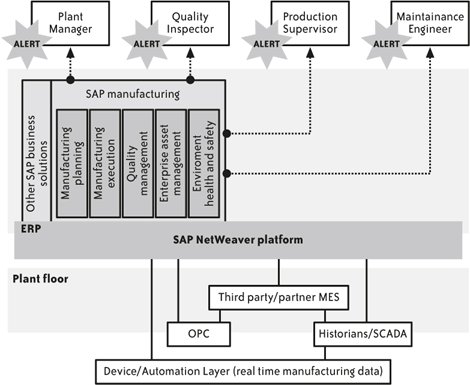Section 10.5. ESA for logistic service providers
|
|
10.5. ESA for logistic service providersSAP's solutions for logistic service providers (LSPs) have focused increasingly on using enterprise services to recompose once-innovative, now-standard processes into new, differentiating ones. An industry that began with warehousing and forwarding freight on behalf of its clients began to evolve as early as the 1980s into an externalized supply chain, adding value by essentially adding services and increasing the scope of these services with each iteration. It's no longer enough for UPS to simply deliver coffee machines; these days, the company is prepared to install the machine and replenish the grounds inside on a daily basis if the customer is willing to pay for it. The flip side of these constantly expanding offerings is the need to develop new business processes and implement them. Meanwhile, supply chains now circle the globe and include multiple tiers of suppliers, contract manufacturers, and service providers such as the logistics companies themselves. Connecting each of these fluid and rapidly changing participants to each other is an incredible strain on applications built along monolithic lines. Enterprise services offer a solution through their ability to begin recomposing commodity supply chain processes such as "track and trace" into differentiating ones, such as "supply chain event management." "Track and trace" refers to the technology invented by FedEx to track packages via the now-familiar systems of unique IDs and sensors. As illustrated in Figure 10-5, what began as a differentiating, core process very quickly became an industry standard adopted by DHL and UPS, and ultimately became a commodity. Today, SAP is creating enterprise services that nearly encapsulate this functionality, and which will be added to the Enterprise Services Repository. But the next step, as seen in Figure 10-6, is to recompose those services from a supporting contextual technology into a differentiatora composite application capable not only of tracking and tracing packages, but also of alerting the appropriate parties at both the logistics provider and the customer in case of exceptioni.e., supply chain event management. That will be done using enterprise services, which continually locate the shipment and react, based on the location, to a predetermined rule set regardless of whether its location and condition at that moment in time demand an alert. LSPs are poised to take this capability a step further with radio frequency identification (RFID) tags and other real-world awareness technologies. With consumer product manufacturers such as P&G and retailers such as Wal-Mart currently deadlocked on which side should cover the investments in tagging and software, LSPs may step into the breach, offering to cover those costs in exchange for integration with their customers' enterprise Figure 10-5. Process example: track and trace Figure 10-6. People and application integration systemsa tradeoff necessary to keep track of what, exactly, is in all of those boxes. This idea, in essence, is a higher-value implementation of track and trace, one that might be made possible through an ESA-driven integration of existing ERP software, supply chain processes, and new technologies such as SAP Auto-ID Infrastructure. |
|
|
EAN: 2147483647
Pages: 265